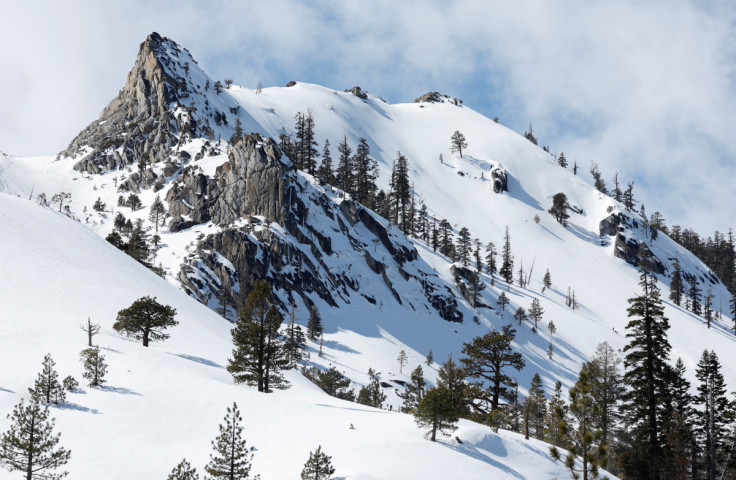Record California Snowpack Bounty Poses Renewed Flood Risks

California's recent spate of epic Pacific storms has blanketed the Sierra Nevada range in a snowpack at or above record levels, state water resource officials said on Monday at a measuring station where less than 3 inches was documented last April.
The bounty of mountain snow, on which California has long relied as a critical natural storehouse of fresh water during dry weather, comes as welcome relief after three years of record drought that had still gripped the state a few months ago.
But this year's abundant Sierra snowpack also poses a severe risk of renewed flooding to parts of California, especially the lower San Joaquin Valley, during the spring thaw, according to state Department of Water Resources (DWR) officials.
Some areas, especially California's central coast and agricultural heartland, are still recovering from floods, mudslides and shoreline damage unleashed by a string of Pacific storms that deluged the state in heavy downpours week after week for three months.
The same storms dumped paralyzing loads of snow in the Sierras and upper elevations of California's coastal mountains, leaving some ski areas such as Mammoth Springs buried almost up to the rooftops of winter cabins.
"This year's severe storms and flooding is the latest example that California's climate is becoming more extreme," DWR director Karla Nemeth said on Monday.
Nemeth spoke to reporters after DWR officials conducted their fourth snow survey of the season at Phillips Station, a spot west of Lake Tahoe where they measured a snow depth of 126.5 inches (321 cm), well more than double the 30-year April average for the same location.
It was the third-highest level documented there since the surveys began in 1941 at Phillips, where last April DWR officials stood on a small patch of snow to measure just 2.5 inches of snow. The highest was 150.7 inches in 1983.
More widely, however, electronic readings from 130 snow sensors throughout California showed the statewide snowpack's water equivalent at 61.1 inches, or 237% of average, tying the record statewide average level set in April of 1952.
This year's average could end up exceeding that level once readings are obtained from additional stations in the days ahead, officials said. The statewide snowpack has only exceeded 200% of average in two other years since records began in 1910 - in 1952 and 1969, the DWR said.
"This year's result will go down as one of the largest snowpack years on record in California," said Sean de Guzman, manager of the DWR snow survey8 and water supply forecasting unit.
Guzman said California's reservoirs, severely drained just months ago, have all been replenished to more than 100% of average statewide. In light of the improvement, Governor Gavin Newsom earlier this month rolled back some mandatory water conservation measures.
Many rural areas still face water supply problems, especially those relying on groundwater basins depleted by drought. Long-term drought conditions in the Colorado River watershed will continue to impact millions of residents of Southern California residents, the DWR said.
© Copyright Thomson Reuters {{Year}}. All rights reserved.





















